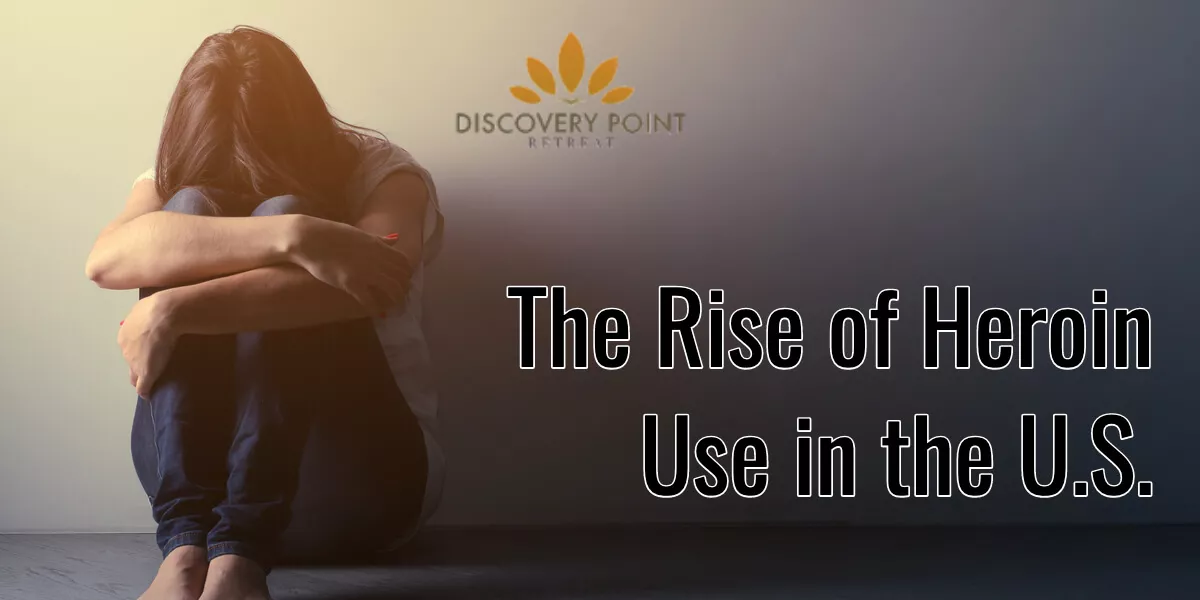The Rise of Heroin Use in the U.S.

In 2018, abuse of heroin and other opioids resulted in the loss of 47,000 lives in the U.S.
The U.S. is in the midst of a heroin and opioid epidemic. More than 70,000 people have lost their lives since 1999 from heroin use alone. When you factor in deaths involving other opioids, that figure jumps to 700,000 lost lives. Heroin and opioid abuse are very much entwined–and in the U.S., that’s always been the case. About half the people who are suffering from heroin addiction are also addicted to one or more opioid painkillers such as oxycodone or fentanyl.
Today’s heroin crisis is directly related to the overprescription of prescription opioid painkillers. During the 1990s, doctors were extremely liberal about prescribing painkillers, but this resulted in a spike in opioid addiction rates. As legislators and the medical community came together to crack down on these prescriptions, people turned to heroin, which has proven to be easier to get and cheaper. Ironically, this isn’t the first time that painkillers have led to a rise in heroin use in the U.S.
Heroin Use in the U.S.
The U.S. has experienced a few heroin epidemics since the drug was commercially available in the late 1800s. The turn of the 20th century witnessed the first epidemic. Just as with this modern one, doctors over-prescribed opioid drugs and when legislators banned them, people turned to heroin. The abuse of heroin also ballooned after WWII and during the years surrounding the Vietnam War.
Today, heroin is actually easier and cheaper to get a hold of than many prescription painkillers, which are actually legal but only with a prescription. The medical community has been under immense scrutiny for its prescribing practices that have led to an increase in opioid addictions. In a recent given year, enough prescriptions were written to give every American their own bottle of pills.”
Opioid painkillers like fentanyl and morphine are highly addictive. Anyone who takes these drugs beyond a short-term basis is at heightened risk for developing an addiction. And, that’s precisely what happened to many people who were prescribed these drugs. When the medical community began to crackdown on prescribing practices, people who were dependent or fully addicted were left out in the cold. As the lessons of earlier heroin rise [should have] taught us, those suffering from opioid addiction felt compelled to turn to heroin.
Heroin Floods the Black Market
The prescription crackdown isn’t the only reason for the current spike in heroin use. Black tar heroin began to enter the U.S. black market in large quantities during the 1990s and is still coming in from Mexico. More crudely produced than Columbian or Afghanistan white powder heroin, black tar heroin contains more impurities, which give the drug its darker hue. This less pristine form of heroin is also cheap and widely available to the west of the Mississippi River. East of the Mississippi, white powder heroin is more prevalent. Both forms are highly addictive and frequently deadly, particularly when mixed with alcohol or other drugs.
An Overview of Heroin Statistics
To consider the magnitude of the current heroin epidemic, consider these statistics. The National Institute on Drug Abuse (NIDA) reports that in 1999, 2,000 people died from a heroin overdose. In 2017, 15,000 people lost their lives to heroin in the U.S. The problem is one of staggering proportions for the medical community. In a single year (2015) in the U.S., emergency rooms treated more than 80,000 people who were admitted for heroin poisoning. Although emergency rooms across the country were able to save many lives, they could not always undo the damage that heroin caused to patients’ organs or other aspects of their physical and mental health.
You can end heroin’s grip on your life by entering treatment with us here at Discovery Point Retreat. Our holistic programs target each aspect of your addiction, helping you reclaim your life and health. Call us at 855-306-8054. We’re always available to take your call.

